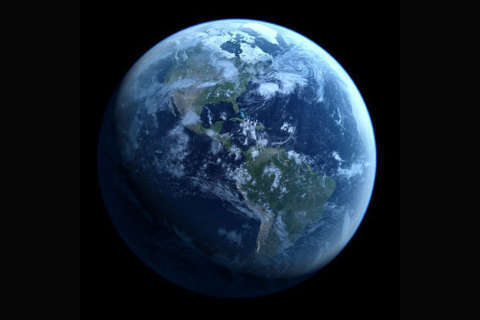Marine biology researchers have achieved a breakthrough in the fight to save the world’s coral reefs from climate change annihilation. This comes as water temperatures recorded off the coast of Florida reached triple digits this summer, and scientists continue to sound the alarm about the effects of climate change on our ocean ecosystems.
This breakthrough, which involves cryogenics, is one researchers said might also be the next step in human evolution — by preserving or extending human life.
“This has been going on for many, many years,” said Mary Hagedorn, senior research scientist with The Smithsonian National Zoo and Conservation Biology Institute.
Hagedorn, who also works with the Hawaii Institute of Marine Biology in Oahu, co-authored a paper that was published Wednesday, outlining the first successful technique cryopreserving and reviving entire coral fragments.
She told WTOP corals have been in decline for a while, and “have been facing many threats related to rising water and air temperatures, due to climate change factors like excess use of fossil fuels.”
Coral Reproduction
Hagedorn and her colleagues work on trying to keep the important ocean organism alive by assisting in coral reproduction. She said they even use human fertility techniques to do so.
“Many animals around the world, you can freeze their sperm — including humans,” the scientist explained. “And we can freeze coral larvae.”
But she said finding coral larvae isn’t always easy.
“It’s entirely dependent on reproduction,” she told WTOP. “And coral are only known to spawn twice a year. So that can make our job incredibly challenging.”
Climate stressors
That already challenging job is made even more difficult because of the effects of climate change, she said.
“As the oceans warm, it causes the corals to stress,” Hagedorn remarked.
She added that when coral stresses, its symbionts, or the algae that function in coral as mitochondria function in a human cell (as its powerhouse), actually leave the coral.
If conditions improve and become more hospitable again (like water temperature lowering, for example), coral symbionts can return to the coral. But if they don’t return within 10 to 12 weeks, the coral begins to die out.
This is the phenomenon known as coral bleaching.
If you’re wondering why you should care about coral bleaching, Hagedorn says it’s simple: Coral is responsible for helping maintain around 25% of all ocean life.
“It [coral] is one of the most crucial things on earth,” she added. “We should spend every resource we have protecting it.”
Hagedorn said coral protects our coastlines and responsible for the habitat of many ocean creatures.
She said coral also single-handedly influences 10 trillion dollars of fishing and tourism industry.
“Reproduction is key for coral to survive,” Hagedorn said, “and right now, they’re not reproducing well.”
With the current climate situation, she said she believes the coming decades could be a dark time for our oceans.
“My guess is that there will always be coral of some kind, but it may not function properly,” she told WTOP. “It may be sparse or half dead and not reproduce well.”
Frozen fragments
But that’s where she and her colleagues around the world come in. And for the first time in a while, Hagedorn said there’s reason to be hopeful and optimistic.
“With this new technique, we can save the biodiversity, and the genetic diversity, of coral reefs,” she proclaimed.
This new coral preservation method doesn’t require coral larvae like before. Rather, Hagedorn says: “We can use coral fragments.”
Those “fragments” are thumbnail-sized coral colonies, cut from live coral without damaging or killing it. The samples are then placed into biorepositories.
“They remain frozen and alive, and they can stay there for potentially hundreds of years,” she told WTOP. “We can bring these tiny samples into the lab, and then we can start the freezing process.”
The full name of this new technique is known as isochoric vitrification.
Hagedorn said the thumbnail-sized coral colony sample, capable of forming its own microbiome, goes into a liquid nitrogen solution, and is cryo-frozen.
The cryofreeze coral then forms a “glass” of sorts, and, without the damaging effects of ice crystals, coral tissue remains preserved and healthy.
“Theoretically, these samples could remain healthy for a thousand years,” Hagedorn said. “Right now, we’re taking coral from the ICU to the hospital ward to recover long-term.”
Hagedorn said this technique will enable her and her colleagues to artificially grow coral eventually, and then put that coral back into reefs when conditions become more hospitable. That process would involve thawing the healthy cryo-frozen coral, and kick-starting a coral revival.
“We could, conceivably, with partners around the world, put every single coral species into our banks, and save them for years and years,” she continued.
Greenlighting past red tape
Hagedorn said that’s actually what they’re doing right now, collecting coral fragments from reefs around the world, in areas like Hawaii and Australia (and many more places), where coral reefs are in decline.
She added that this type of restoration is a way of taking matters into their own hands as scientists, when the ongoing political debate over climate change in America is causing inaction, paralyzing progress.
“We aren’t altering our own behaviors fast enough,” Hagedorn said, adding that this new cryofreeze method gives us the time we need to make changes that will lower ocean temperatures over the coming generations.
Finally, she said there’s another reason isochoric vitrification could be a vital step in the progression of humanity.
Hagedorn explains that the cryofreeze preservation technique might not only be useful for preserving coral — but could also be useful in preserving ourselves.
“It is the wave of the future,” she said, “not only for coral, but for things like small organs — for human cryopreservation as well.”
She said the discovery of this technique proves the future is now, and that watering the seeds of restoration today could bear the fruits of evolution tomorrow.








